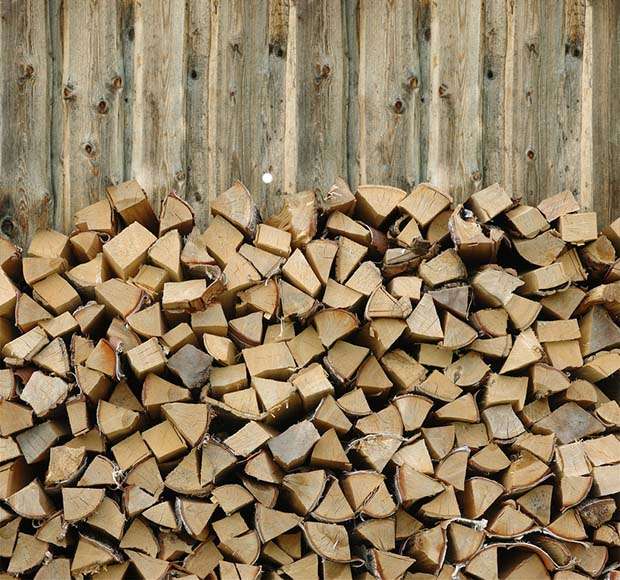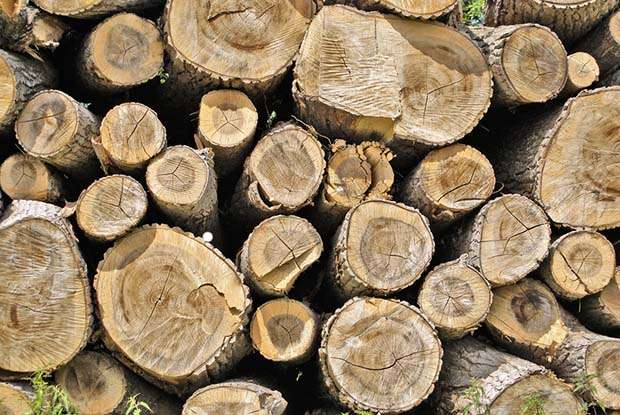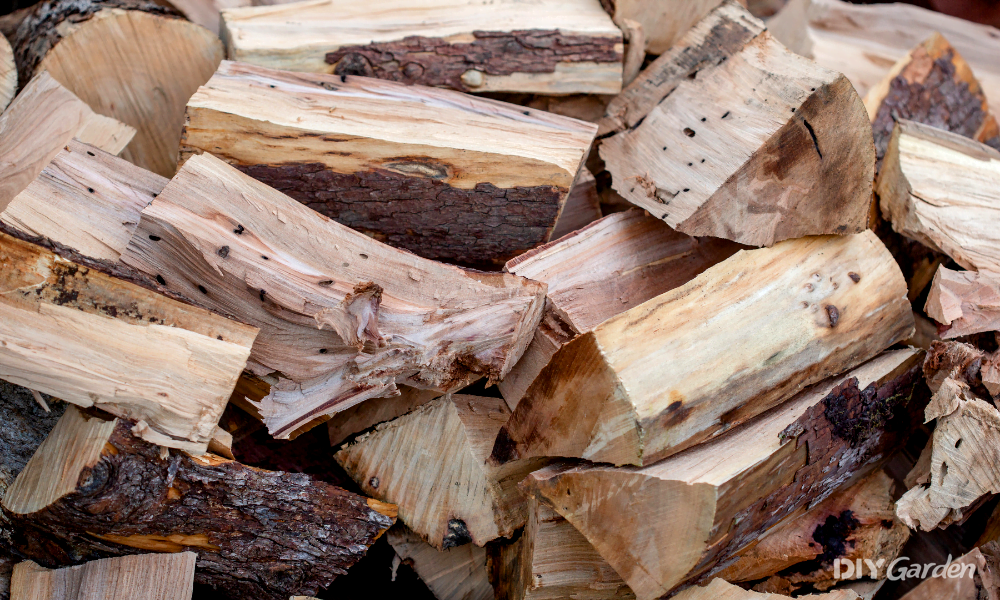Dealing with wet firewood can be incredibly frustrating, especially during the bitter cold of winter. But fear not, as there are several tips and tricks to help you expedite the drying process and ensure a warm, efficient fire. To start, removing the bark and stacking the wood in a way that allows for air circulation is key. Additionally, covering the top of the firewood pile during rainy periods but leaving the sides exposed will protect it from excess moisture. Elevating the firewood with a log rack prevents absorption of moisture from the ground, and if the wood does get wet, it must be properly dried before use to avoid sabotaging the fire. Dry the sides of the firewood with dry towels or even snow, and bring some wet wood indoors to dry near a heat source. Properly drying wet firewood is crucial for efficient burning and preventing excessive smoke and creosote buildup, so take the time to stack the wood in a well-ventilated manner and split it into smaller pieces for faster drying. Keep in mind that drying time can vary depending on the moisture content and environmental conditions, so patience is key. With these tips in mind, you’ll be well-equipped to tackle wet firewood and enjoy a cozy, warm fire in no time.
Tips for Drying Wet Firewood
Wet firewood can be incredibly frustrating, especially during the colder months when you rely on a warm fire to keep your home comfortable. Not only does wet firewood make it difficult to start a fire, but it also produces excessive smoke and can even be dangerous to burn. To avoid these issues and expedite the drying process, there are several steps you can take to properly dry your wet firewood.

Remove Bark and Stack for Air Circulation
One of the most important steps in drying wet firewood is to remove the bark. Bark holds moisture and can slow down the drying process. By stripping off the bark, you are allowing the wood to dry more quickly.
In addition to removing the bark, stacking the firewood properly is crucial for air circulation. Place the firewood in a well-ventilated location, such as a covered outdoor area, and stack it in a way that allows air to flow between the logs. This will help to expedite the drying process by allowing the moisture to escape.
Cover the Top of the Firewood Pile
During periods of rain or snow, it is important to cover the top of the firewood pile to prevent additional moisture from soaking into the wood. However, it is important to avoid covering the sides of the pile. This can trap moisture inside and impede the drying process. By only covering the top, you are protecting the firewood from direct exposure to the elements while still allowing for air circulation.
Use a Log Rack to Elevate the Firewood
Using a log rack to elevate the firewood is another helpful tip for drying wet firewood. By keeping the wood off the ground, you can prevent it from absorbing moisture from the soil. This is especially important if you are storing firewood outdoors for an extended period of time. Elevating the firewood on a log rack will also allow for better air circulation and faster drying.
Dry the Sides of the Firewood
In some cases, the sides of the firewood may become wet even if the top remains covered. To dry the sides of the firewood, you can use dry towels or even snow. Gently rub the towels or snow along the wet surface of the wood to absorb the moisture. This will help to dry the firewood more evenly and prevent it from becoming too damp.

Bring Wet Firewood Inside
If you need to use wet firewood soon and don’t have time to let it naturally dry, you can bring some of it inside the home. Place the wet firewood near a heat source, such as a fireplace or wood stove, to expedite the drying process. The higher temperatures indoors will help to evaporate the moisture from the wood. However, it is important to note that you should not burn wet firewood directly in your fireplace or stove, as this can sabotage the fire and create a dangerous situation.
Stack the Firewood for Air Circulation
When bringing wet firewood indoors, it is important to stack it properly for air circulation. Just as you would stack firewood outdoors, make sure to create gaps between the logs to allow air to flow through. This will help the firewood dry more quickly and evenly. Additionally, make sure to place a tray or tarp underneath the stack to catch any excess moisture.

Split the Firewood into Smaller Pieces
Splitting wet firewood into smaller pieces can also help with the drying process. Smaller pieces have more surface area exposed to air, allowing moisture to evaporate more quickly. If you have a wood splitter or an axe, consider splitting any larger logs into smaller pieces before drying them. This will ensure that you have dry firewood readily available whenever you need it.
Shave Off Wet Parts of the Firewood
Sometimes, even after drying, there may still be wet parts on the surface of the firewood. To access the dry wood inside, you can shave off any wet parts using a hatchet or a knife. This will expose the dry wood underneath and make it easier to start and maintain a fire. Just be careful when handling sharp tools and take your time to avoid any accidents.

Place Wet Firewood Next to a Heat Source
If you need to dry wet firewood quickly, you can place it next to a heat source. This could be a fireplace, a wood stove, or even an electric heater. The heat will help to evaporate the moisture from the wood, making it dry more rapidly. However, it is important not to put the wet firewood directly into the fire or heat source, as this can cause it to catch fire or release excessive amounts of smoke.
Properly Drying Wet Firewood
Properly drying wet firewood is crucial for efficient burning and preventing excessive smoke and creosote buildup. It is important to be patient, as it can take several months or even longer for wet firewood to completely dry out. The drying time will depend on the moisture content of the wood and the environmental conditions.
By following these tips, you can expedite the drying process and ensure that you have properly seasoned firewood for a warm and enjoyable fire. Remember to remove the bark, stack the firewood for air circulation, and cover the top of the pile during rainy periods. Additionally, using a log rack to elevate the firewood, drying the sides with towels or snow, and bringing some wet firewood indoors can all help speed up the drying process.
Don’t forget to stack the firewood properly indoors for air circulation, split larger logs into smaller pieces, and shave off any wet parts to access dry wood. Finally, if you need to dry the firewood quickly, place it near a heat source, but avoid putting it directly into the fire. With these tips in mind, you’ll be able to dry your wet firewood effectively and enjoy a warm and cozy fire all winter long.





